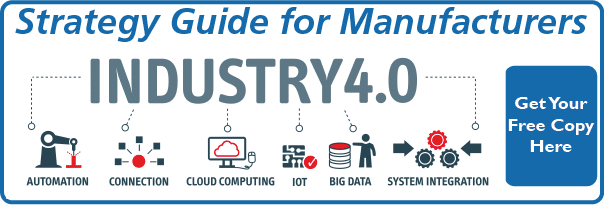Price, Quality & Lead-time
If you were involved in the manufacturing world during the 90s you experienced some disruption.
Import competition caused domestic manufacturers fits. They offered lower prices, often shorter lead-times, and although heretical to acknowledge, often even higher and more consistent quality - or importantly, at least adequate quality.
Many manufacturers dismissed the imports. You heard the arguments. "They wouldn't last." "Business couldn't be run at those prices." "The quality is horrible." "Price, lead-time and quality - pick two."
Some companies smugly reassured themselves of dominance....right into oblivion. Others identified the challenge as one of manufacturing process - and some of those set out to implement Deming's principles, often codified into LEAN implementations.
Some companies did it well and thrived. Others survived.
Almost all emerged convinced that management of business operations solved the problem.
That's mistaken - and it's putting today's manufacturers in grave jeopardy.

Symptom vs. problem
Inefficient manufacturing which led to long lead-times, mediocre quality and higher costs made them non-competitive as market expectations changed.
The manufacturing shortcomings were a symptom of the problem, in other words. The problem was that buyer behaviors and market expectations evolved - and manufacturers had a tin ear at best, or condescension in most cases, to what buyers and markets expected.
This is a critical distinction.
If you believe that process was the solution to the problem, then your business hammer is process. That's precisely the perspective of many companies today - staffed with cadres of Six Sigma black belts who can swoop in an optimize any process. That's the way they respond to perceived challenges in business, and their market development strategy typically focuses on improving their efficiency.
If, however, you recognize that the root cause was actually changing expectations, then you can acknowledge that emphasizing efficiency has many benefits and helped to improve manufacturing operations so that companies could meet expectations and satisfy buyers. And that the key to success is to carefully observe, understand and anticipate buyer and market expectations - not to simply run another kaizen.
The irony here, of course, is that the emphasis on finding root cause has actually led many astray. They look for the mold defect leaving the burr or the waste in cutting and pasting spreadsheet data - and completely miss the real animating root cause which is failure to understand the market.
And this is leaving companies grievously exposed for another cycle of misery.
Focus on product, features and incremental improvement
The thoughtful introspection that's core to modern manufacturing culture conditions companies to look inward and focus on detail. They have product teams that assess features; they build product roadmaps which incorporate incremental improvement; and they view the world through the lens of their product into which they've poured years of energy.
And their revenue growth approach is a natural extension of that world view.
They talk about the product - often even obsess about the product - and their internal management processes. They very rarely talk about the functional impact that their ideas, which are implemented through their product, has on their customers' businesses.
They sell a piece of capital equipment, for instance, to fix a problem on the line. The buyer, however, buys it to improve their business by lowering costs, increasing output or even minimizing hassle of scheduling chaos and late night calls from a 3rd shift in disarray.
Their market development strategy, to the extent that the term can be applied, is to search for nails to pound in with their process hammer.
Market expectations and buyer behaviors are changing again
Manufacturing 4.0 collectively encompasses IIoT, 3D Printing, cloud applications and other disruptive technologies. Most middle market manufacturers are only vaguely aware of application, and few are proactively experimenting or even thinking about how those will impact their business in 10 years.
Concurrently demographics are at play as older worker need to continue to work to fund retirement as low returns limit passive income, millenials are sweeping into managerial roles with vastly different expectations, and market trends such as sharing economy, digital organizations and subscription models are increasingly expected.
Yet in the capital equipment space there's still frequent debate about whether their buyers use the internet to research and incredulity that anyone might suggest the traditional capital equipment sales model could ever shift into one of subscriptions (even as it's happening now in the car industry.)
This echos the dismissal of import competition two decades ago.
What's the answer
Like everything in life it's not easy, yet it's simple.
There are two imperatives.
First is to approach corporate strategy with a rigorous and expansive methodology that considers broad market expectations - not the echo chamber of what sales reps bring back to the office which is naturally limited by their own limitations and filters.
Second is to stop tweaking marketing and sales with incremental addition of martech and periodic sales training. Instead, fundamental organizational change is needed - consolidating PR, Marketing, Sales & Customer Service. That involves the org chart, budgets, headcounts and most importantly, philosophy. The change needs to reflect the continuum of prospect, buyer, customer experience.
Both of these shifts are based on observing and anticipating market and buyer expectations. And both represent radical shifts in market development strategy for companies that traditionally think in terms of features to add to the next model - and corresponding bullet points on pitch decks and brochures.
There's a lot to this, obviously, and it's potentially wrenching for organizations. It's therefore a CEO responsibility - both to provide vision and reassurance, and to manage the execution at the senior management level.
Wrenching is unpleasant. We all seek to avoid it. Middle market manufacturers, among the most conservative of organizations, probably cling more passionately to the status quo than most. But the 90s provide a great preview of just how unpleasant the outcome is for those who ignore buyer and market expectations, preferring to focus on internal operations to keep themselves occupied.
Does your organization have the intestinal fortitude to put in the work now? If you do, this is an extraordinary opportunity to leapfrog competitors and help to define new categories.



